Fine art photographer Keith Dotson presents black and white photographs and history of the 1880s C.H. Pender Grocery Store in rural North Carolina
I recently traveled to North Carolina to make photographs of the historic C.H. Pender Grocery Store building, built in the 1880s, and now sitting vacant. To make the most of my visit, I made images on my trusty Sony A7RIV and also shot the location on my vintage medium-format Hasselblad 500 C/M, using the Zeiss Makro-Planar 120mm lens.
Behind-the-Scenes Video of My Visit to the Pender Store
History of the C.H. Pender Grocery Store
The Cedar Grove crossroads community started in 1828 with the establishment of the first post office.
Crossroad communities like this were common in this region in the 1800s and early 1900s. Stores and other businesses would open at the crossroads, with houses extending out from the center, and all surrounded by farms. People could easily walk to the crossroads to acquire necessities. After roads were paved and cars made traveling to bigger towns easier, these old-fashioned crossroads commerce centers began to decline.
The Efland-Cedar Grove Road began as a stagecoach road. There’s an old water well alongside the modern pavement where the stagecoaches would stop for water. It wasn’t paved until the 1940s, and the crossroad was paved in the 1950s.
C.H. Pender Grocery, Built 1880s
The registration form from the National Register of Historic Places calls the building the Allison-Oliver-Pender Store, after all the historical owners. The C.H. Pender Grocery Store was built in the 1880s by the Allison family. Later it was owned by the Olivers, and C.H. Pender bought it in the 1960s. I’m not sure when it closed but it was still in business as late as 1998, when the National Registration of Historic Places form was completed.
The smaller room on the left side was a later addition that served as the Post Office.
Below is the official description, quoted verbatim from the National Register of Historic Places form published in 1998:
“DESCRIPTION: The late 1800s frame weatherboarded building is 3-bays wide with a front-gable roof sheathed in v-crimp metal and with returned cornice. The main facade is lit with 9/9 double-hung windows and is fronted by a hipped porch roof supported by chamfered posts. A small 1 -story side addition, which formerly housed a post office, is lit with 6/6 and 4/4 double-hung windows. The interior of the store retains the original fixtures, glass display cases and hardwood floors. The structure was erected in the 1880s by the Allison family and has been in continuous operation to the present day. The Oliver family acquired the store in October 1907 and C. H. Pender and his wife Irene Oliver acquired the store in the 1960s (Graybeal interview with Irene Oliver Fender, July 16, 1997 and Stephen Finley, August 14, 1997).”
To put the age of this building into perspective, here’s a list of things that happened in the 1880s:
- The first electric lights were in development 1880-82
- The gunfight at the OK corral — 1881
- Bob Ford killed Jesse James in 1882
- Krakatoa volcano erupted in 1883
- The Benz Motorwagen, which looked like a three wheel motorized buggy, was introduced as the first automobile in 1885.
- Coca-Cola was invented in 1886
- Jack the Ripper was busy at work in Whitechapel London in 1888
- The Eiffel Tower opened in 1889 as the tallest structure in the world
C.C. Oliver Auto & Tractor Repair Shop
On the corner of the intersection, directly next to the Pender Store is a small metal building that served as an auto and tractor repair shop, established in 1946, still in business as late as 1998, when the National Register of Historic Places registration form was written. It sits on the site of an earlier blacksmith shop.
Here is the description quoted from the National Register of Historic Places form: “The 1-story concrete block garage building with a stepped parapet was built in 1946 by Charles Crisp Oliver. T.L. Oliver, the father of Charles Crisp, operated a blacksmith shop on this site in the early 1900s.”
On the other side of the Pender store is a modern post office, built in the 1950s.
Allen A. Ellis Store, built 1923
On the Southwest corner of the intersection, across the street, is the Ellis Store, built in 1923. Below is the verbatim description of the Ellis store from the National Register of Historic Places.
“DESCRIPTION: The store building built by Alien A. Ellis in 1923 is an excellent example of a typical early 20th-century rural crossroads store building. This 2- story, 3-bay-wide weatherboarded structure features a cornice supported by paired brackets below a flat roof. The symmetrical facade at the lower-level is lit by triple-grouped, 1/1 fixed windows flanking the central entrance, while 2/2 double-hung windows light the upper level.
Entrance to the building is gained through a 3-door opening. Beyond the entry doors is a windowed vestibule and a set of interior entry doors.
Both the front and the back porches have hipped roofs supported by square posts. Ellis operated both a general store and a post office here after the Patton Store building (11), located a few yards west, closed ca. 1923.”
Photographs shot with the Sony A7RIV
Here are my black and white photographs from the Cedar Grove Crossroads community, including the star of the show, the C.H. Pender Store. Fine art prints are available.

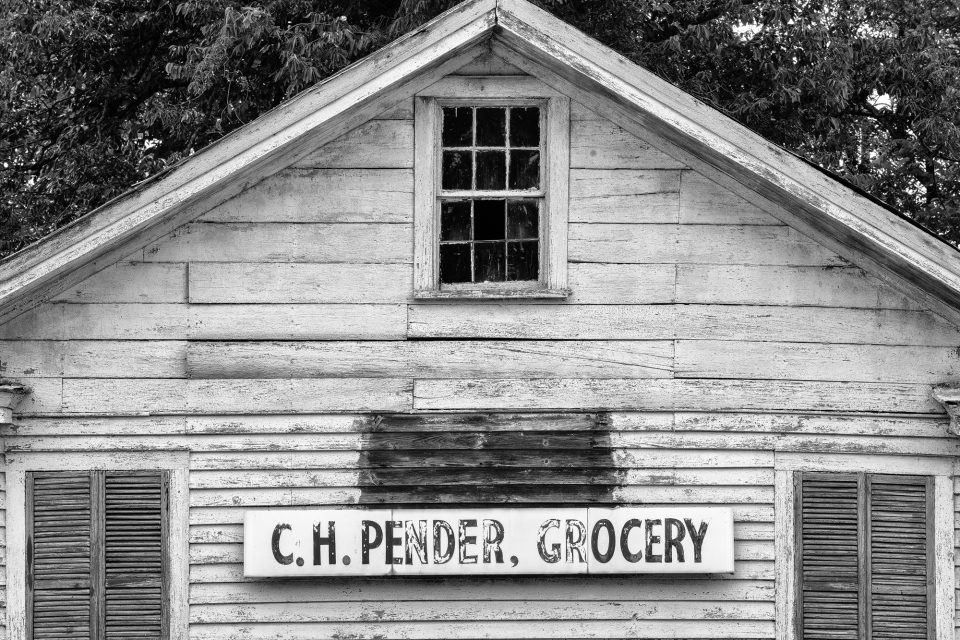
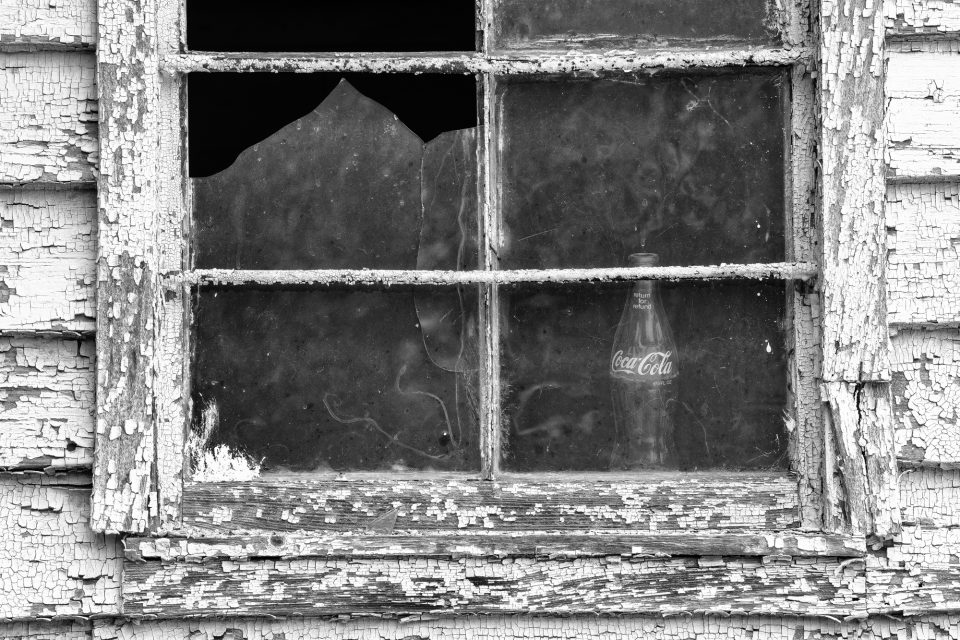
Photographs shot with the vintage Hasselblad 500 C/M medium format camera
I also shot the location with my vintage medium-format Hasselblad 500 C/M, using the Zeiss Makro-Planar 120mm lens. The film is the iconic Kodak Tri-X 400 iso in 120mm format. The Hasselblad 500 C/M makes square images.
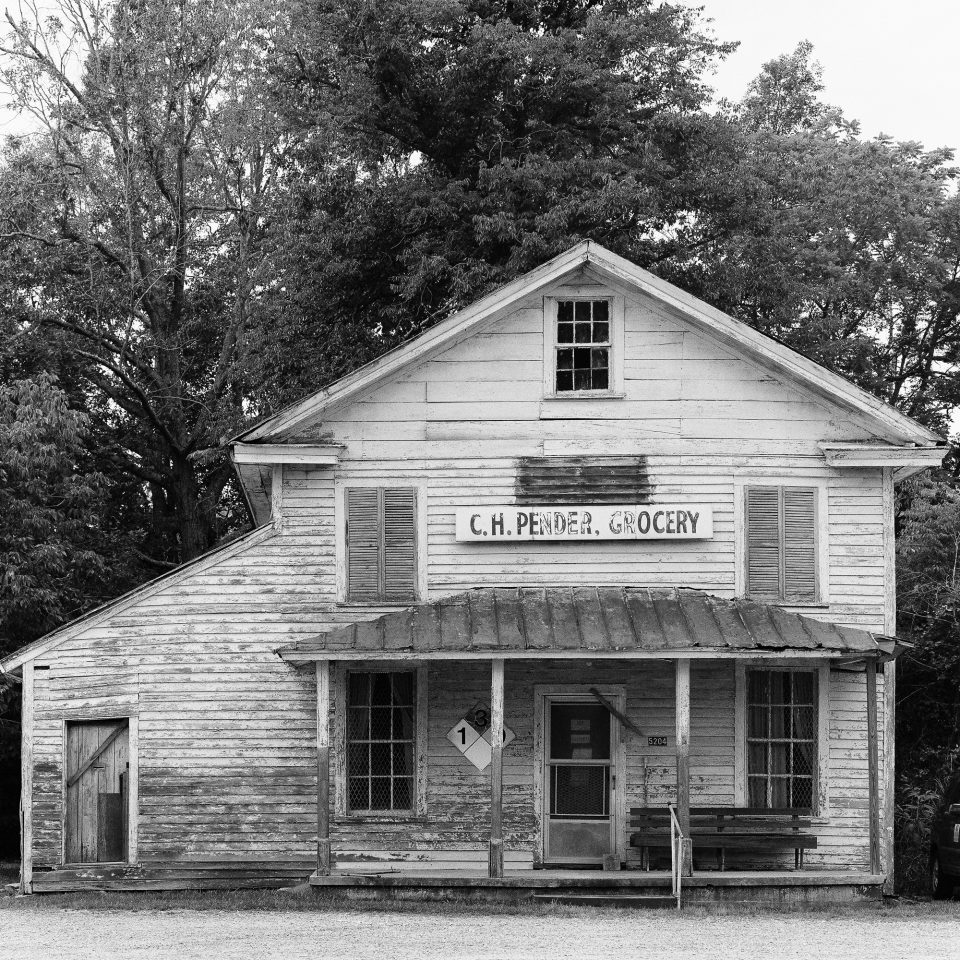
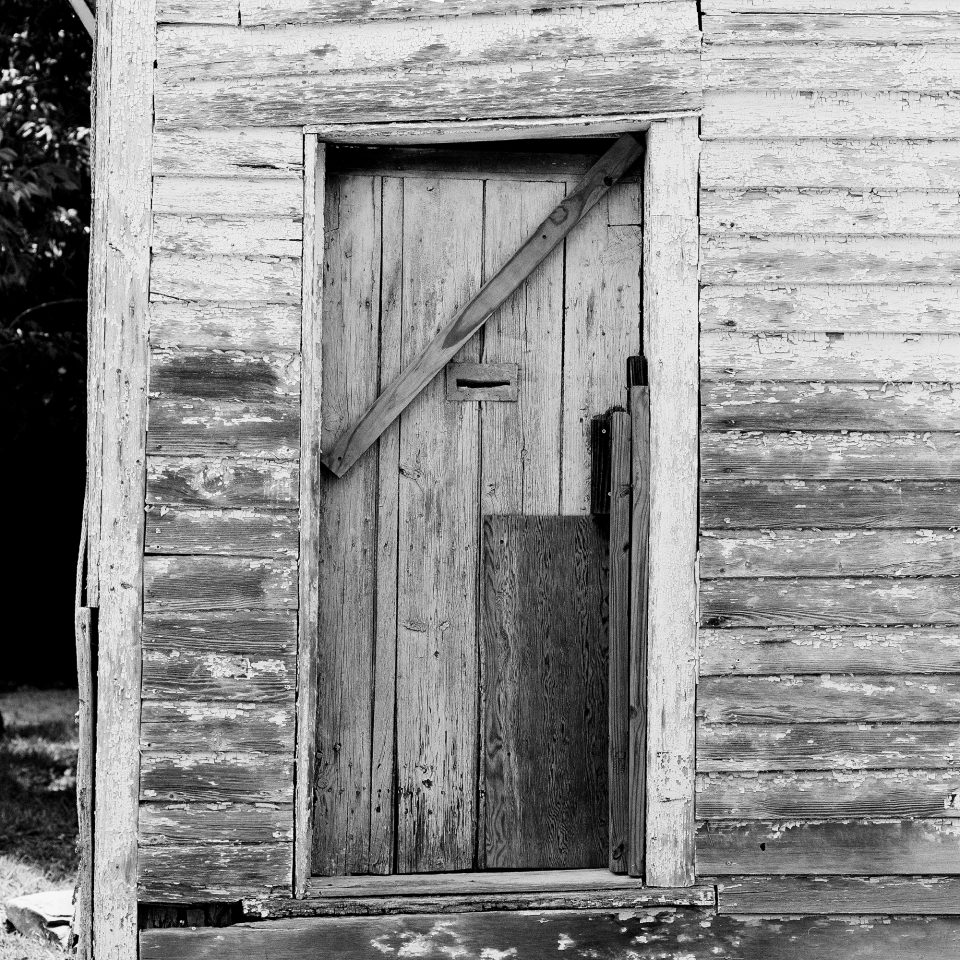
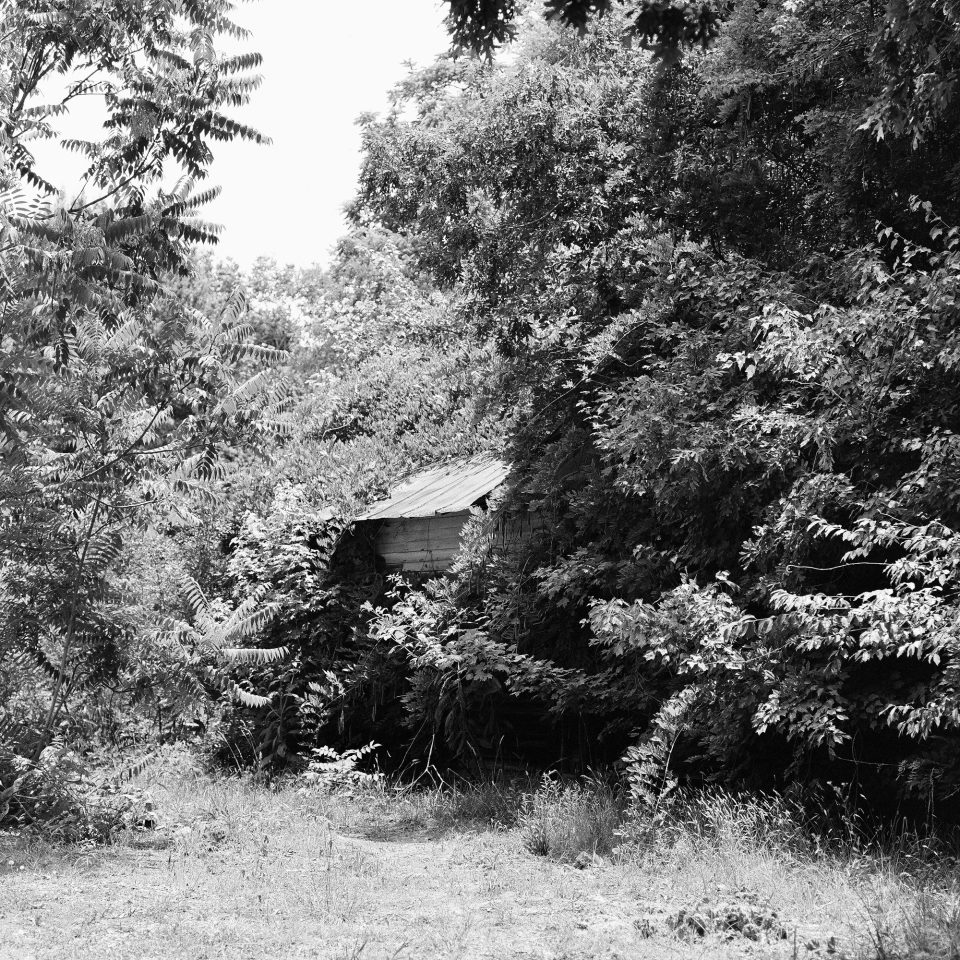
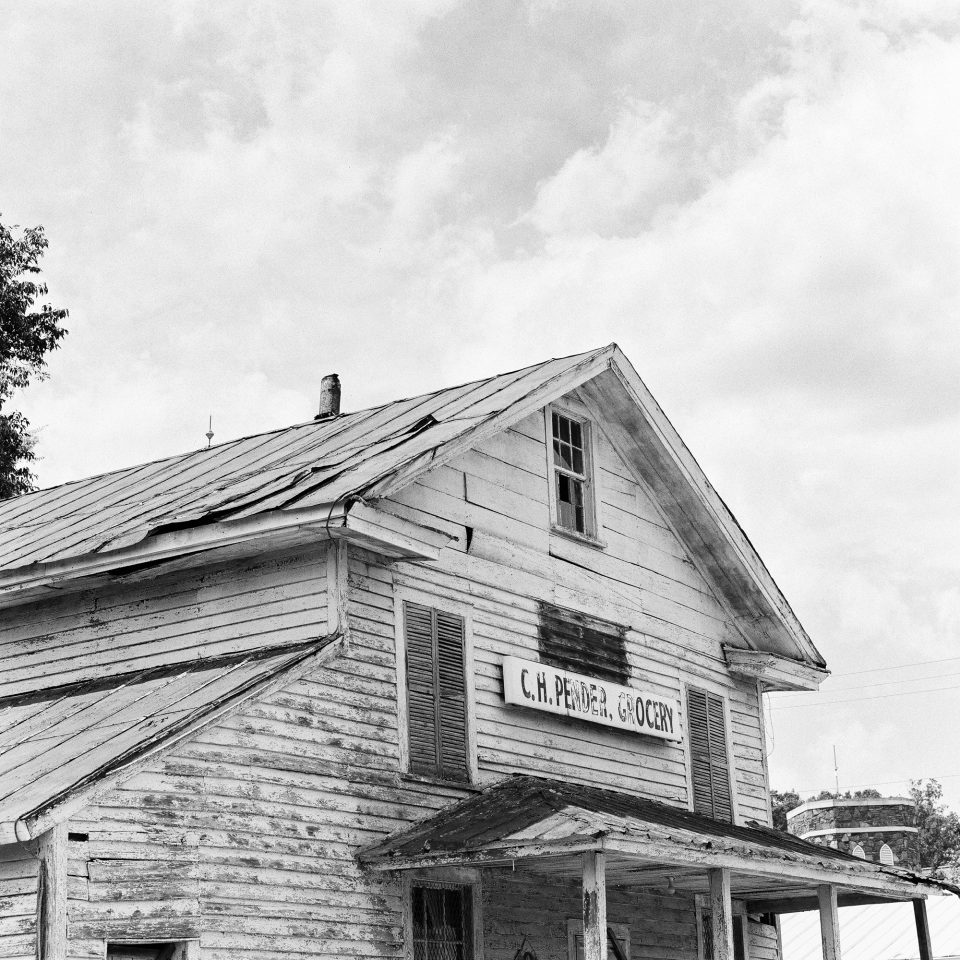
Thanks for reading.
Be sure to visit me on Instagram, YouTube, or Pinterest, or on my website at keithdotson.com.
~ Keith
